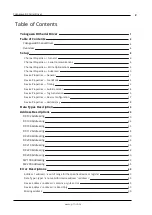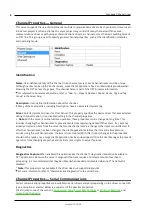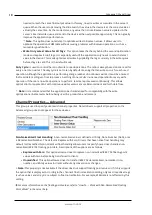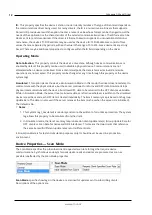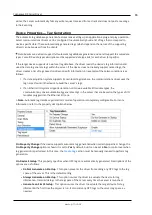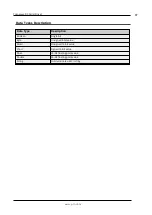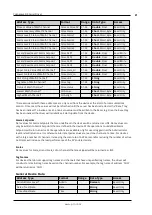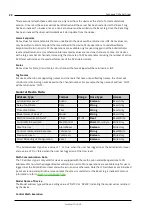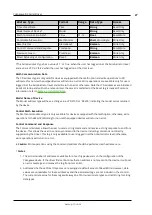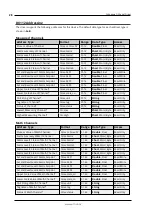
Yokogawa DX Serial Driver
l
Respect Client-Specified Scan Rate
: This mode uses the scan rate requested by the client.
l
Request Data No Faster than Scan Rate
: This mode specifies the maximum scan rate to be used.
The valid range is 10 to 99999990 milliseconds. The default is 1000 milliseconds.
Note
: When the server has an active client and items for the device and the scan rate value is
increased, the changes take effect immediately. When the scan rate value is decreased, the changes
do not take effect until all client applications have been disconnected.
l
Request All Data at Scan Rate
: This mode forces tags to be scanned at the specified rate for
subscribed clients. The valid range is 10 to 99999990 milliseconds. The default is 1000 milliseconds.
l
Do Not Scan, Demand Poll Only
: This mode does not periodically poll tags that belong to the
device nor perform a read to get an item's initial value once it becomes active. It is the client's
responsibility to poll for updates, either by writing to the _DemandPoll tag or by issuing explicit device
reads for individual items.
For more information, refer to "Device Demand Poll" in server help
.
l
Respect Tag-Specified Scan Rate
: This mode forces static tags to be scanned at the rate specified
in their static configuration tag properties. Dynamic tags are scanned at the client-specified scan
rate.
Initial Updates from Cache
: When enabled, this option allows the server to provide the first updates for
newly activated tag references from stored (cached) data. Cache updates can only be provided when the
new item reference shares the same address, scan rate, data type, client access, and scaling properties. A
device read is used for the initial update for the first client reference only. The default is disabled; any time a
client activates a tag reference the server attempts to read the initial value from the device.
Device Properties — Timing
The device Timing properties allow the driver's response to error conditions to be tailored to fit the
application's needs. In many cases, the environment requires changes to these properties for optimum
performance. Factors such as electrically generated noise, modem delays, and poor physical connections
can influence how many errors or timeouts a communications driver encounters. Timing properties are
specific to each configured device.
Communications Timeouts
Connect Timeout
: This property (which is used primarily by Ethernet based drivers) controls the amount of
time required to establish a socket connection to a remote device. The device's connection time often takes
longer than normal communications requests to that same device. The valid range is 1 to 30 seconds. The
default is typically 3 seconds, but can vary depending on the driver's specific nature. If this setting is not
supported by the driver, it is disabled.
Note
: Due to the nature of UDP connections, the connection timeout setting is not applicable when
communicating via UDP.
Request Timeout
: This property specifies an interval used by all drivers to determine how long the driver
waits for a response from the target device to complete. The valid range is 50 to 9,999,999 milliseconds
(167.6667 minutes). The default is usually 1000 milliseconds, but can vary depending on the driver. The
www. ptc.com
13


